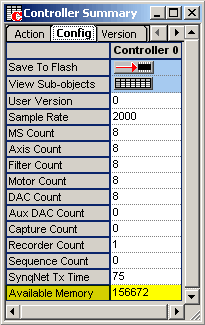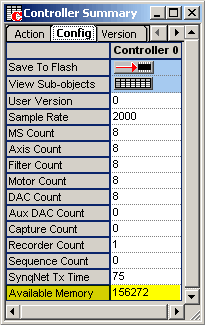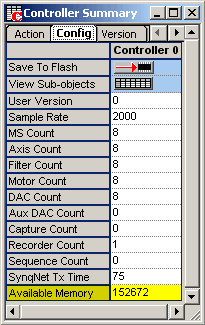
|
|
| . |
Determining Required Compensator Table SizeThe compensator table size is dependent on the number of dimensions (1D or 2D), the position range, and the resolution (or granularity) of the compensation points. The compensator uses linear interpolation to calculate the compensation values between each distinct compensation point. For each compensation axis there are three position values: Min, Max, and Delta. The compensating range for an axis is specified by the Min and Max positions along the axis. The range (Max – Min) divided by Delta, determines the number of required points for the compensator. You can calculate the number of required compensator points by using the following equations: 1D Compensation: Points = (positionMax-positionMin) / positionDelta + 1 2D Compensation: Points = PointsX * PointsY NOTE: Delta must be an exact multiple of the difference between Min and Max. |
|||||
No Compensator Table  |
Compensator Table (size = 100) |
Compensator Table (size = 1000) |
Each data point will require 4 bytes of controller memory. In the "No Compenstor Table" example above, a maximum of 39168 (156672 / 4) points can be created.
NOTE: Although having more compensator points gives a better representation of a system; it would also significantly increase the time needed to gather all of the required data. For instance, if you added 20000 points and it took an average of 5 seconds to collect the data for that point, it would take you 100000 (20000 * 5) seconds = 1.16 days to collect that data.
| | | Copyright © 2001-2010 Motion Engineering |